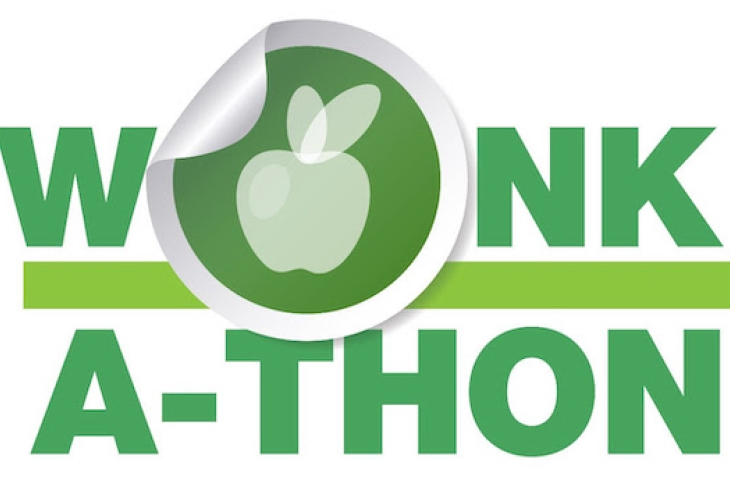Editor’s note: This essay is an entry in Fordham’s 2024 Wonkathon, which asked contributors to answer this question: “How can policymakers and practitioners radically reduce chronic absenteeism—at least below pre-pandemic levels and preferably much further?” Learn more.
The onset of Covid-19 and the school closures that followed served as a catalyst for education choice programs to explode nationwide. The school choice movement even landed itself a new catchy tagline: “Fund students, not systems.” Now, as the challenge of addressing the absenteeism crisis in public schools takes center stage, policymakers would be wise to heed the lessons of directly funding families by going a step further: Let’s pay students to go to class.
Thanks to the pandemic, cultural norms and, more concerning, the value of attending school have weakened and even crumbled in some households, adding yet another factor to the complex challenges driving many students out of the classroom. While the factors may be complex, the potential solution to the chronic absenteeism crisis needn’t be complicated. In fact, it can be summed up in three words: Cash is king.
As a kid, which would you have preferred: to go play baseball at the park or to attend school when the sun was shining? If you hesitated over that question, you must have been a great student. For us it was baseball all day—no competition.
Luckily, we had parents who placed great value on receiving an education and forced us to attend. Nowadays, not every parent is as able or as assiduous. Some, like single working moms, are unable to enforce their kid’s presence at school, and others don’t view school attendance as a necessity.
In these situations, using the stick over the carrot just doesn't work. Perhaps we should try the oldest carrot of all—bribery. Growing up, our schools used to do this all the time by offering pizza parties, special field trips—once even Portland Trail Blazers tickets—in exchange for reading books and scoring well on our tests.
Schools already attempt to purchase student outcomes. Why not try the same with attendance by using cash payments?
Believe it or not, this is not a new idea. Renowned education reformer Geoffrey Canada has his Harlem Children’s Zone pay $120 a month for high-quality performance and attendance. Similar conditional cash payments have been used in countries such as Mexico, with students involved in the program having a probability of completing high school at 10 to 15 percent higher rates, according to a study from the National Bureau of Economic Research.
In 2010, Roland Fryer ran a landmark experiment on financial incentives and student achievement that observed paying students for their test scores did not significantly alter their performance in Chicago; nevertheless, student attendance increased. Furthermore, what gets considerably less coverage from that study is that English-speaking students in Dallas, who were paid $2 for every book they read and understood, saw noteworthy improvements in their reading achievement equivalent to over two months of schooling.
A similar program in Washington, D.C., generated promising, if muted, results. There, students could earn as much as $1,500 a year for good behavior, proper attendance, and completing their assigned work. Fryer found positive results for both student achievement and number of hours spent in the classroom, though these were not statistically significant. Even so, these data indicate that the carrot may really be better than the stick.
Why does paying students for attendance and other positive behaviors succeed where rewarding students solely for their performance consistently fails? It could be that children—particularly younger kids—may intuitively understand how to make different choices but not how to improve their test scores.
For example, a fourth grader may immediately recognize the relationship between good attendance, doing their homework, reading books, and a financial reward, but they may struggle to understand how to write a better book report or do better in math.
Nonetheless, this approach does raise two major problems: the moral dilemma of paying children for something that they really should be doing anyway, and the financial dilemma of how a district or state is going to be able to afford to pay their students.
Fortunately, data from Dr. Fryer’s study show little negative impact on students’ “intrinsic motivation” after receiving payment. Moreover, the attendance problems plaguing districts nationwide call to mind two old mantras: desperate times call for desperate measures, and the ends justify the means. Districts cannot simply do nothing, pretend that all is well, and expect truant students to return to school. They must adapt and provide some sort of incentive.
Covid relief funds were a missed opportunity, but paying students to attend class is still possible for most districts despite the “bloodletting” from the fiscal cliff, which has resulted in school closures. Undoubtedly, district budgets will likely force the closing of under-enrolled schools that are underperforming, but they shouldn’t stop there. School Districts should continue analyzing their budget by measuring which staff have a high return on investment regarding student attendance and outcomes.
Clearly, the presence of many of these administrators, attendance coaches, and mentors who have been hired to help students get back into school has not successfully improved student attendance or student outcomes.
So why stick to what hasn’t been working?
Instead, districts concerned about chronic absenteeism should reallocate a financial amount that works best for them and pay cash to students for attendance and inputs that translate into increased student outcomes such as reading books, doing homework, and behaving well in class. The philanthropic world could even alleviate some of the financial burden by funding these programs.
In the few places where paying students has been tried, it has shown promise. Now the only thing missing to scale the success of cash payments to students is a cadre of leaders to champion the solution.




